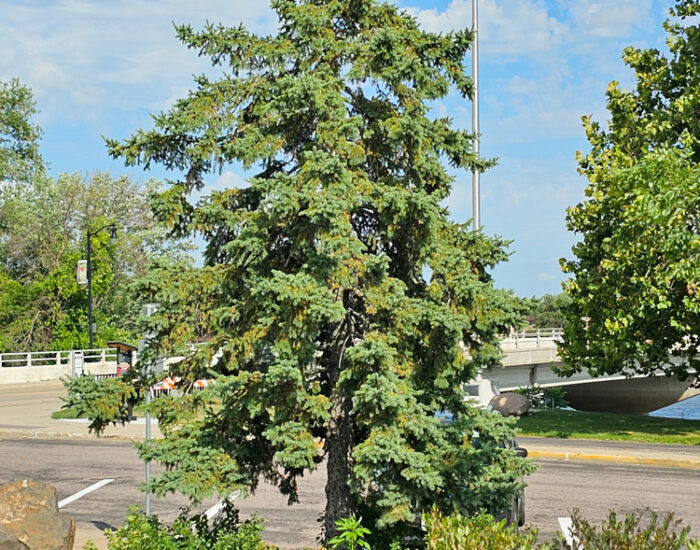White Spruce
Picea glauca
White Spruce is a moderately fast-growing native spruce with a broad, conical form. Its needles are an attractive blue-green, contrasting with its small, brown cones. This wide-ranging species is more tolerant of poorly drained and nutrient-deficient sites than other spruces but is intolerant of heavy urban pollution.
White Spruce is a highly adaptable species, typically found north of the Wisconsin-Illinois border to Alaska. It is tolerant of extremes in temperature, with one site in Alaska experiencing -65° F winters and 95° F summers. It has also been observed to grow in a wide range of soil pH, with sites ranging from 4.7 to 8.2 (the optimal range is reported to be 4.7-7). As the species is often adapted to the conditions of its source, it is important to source White Spruce locally – a tree adapted to the Central Sands of Wisconsin may not be tolerant of the alkaline soils found in Southeast Wisconsin.
Within its range, the species is commonly associated with Paper Birch, Quaking Aspen, and Balsam Fir. In Wisconsin, you may find White Spruce with Yellow Birch and Sugar Maple in more established forests. Historically, the native range of White Spruce has been limited by fire and flooding; both will kill young seedlings, and fire will kill young to intermediate trees. In recent years, fire suppression has contributed to a wider range for this tree. It was also heavily planted, along with White Pine and Red Pine, by the Civilian Conservation Corps to create jobs during the Great Depression.
White Spruce is a valuable tree in the forest products industry. Its relatively fast growth rate combined with its adaptability to many sites has made it a useful choice in plantations and reforestation efforts. White Spruce is also useful in restoration work as its roots contribute to soil stability and improve water quality.
Historically, White Spruce provided a wealth of benefits to Native American tribes. The roots were woven to create rope and the bark was used as a covering for dwellings. Boughs cut from the tree were used to create bedding.
White Spruce has been characterized as a shallow-rooted tree, susceptible to wind throw; however, the rooting habit is more often a result of site conditions, especially those where water tables are high. In these areas, the roots will not extend below the water table as they require oxygen for growth.
Complete information on this species can be found at the source link below:
Information Source: https://kb.jniplants.com/white-spruce-picea-glauca
Plant Source: Johnson’s Nursery
Core Characteristics
Type: Evergreen
Origin: Northern North America
Mature Height: 40-60 Feet
Mature Spread: 10-20 Feet
